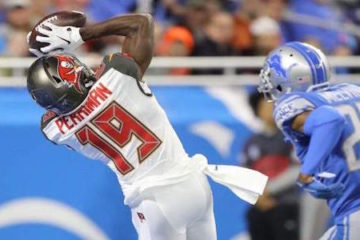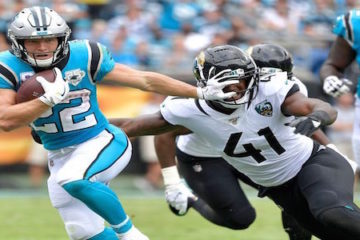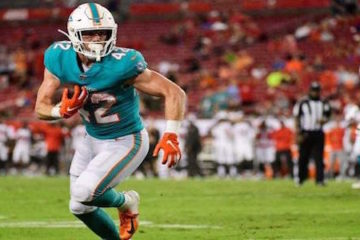2012 Fantasy Baseball, Week 12: Buy Low On Lincecum, Sell High on LaHair
Sell High: Bryan LaHair
One of the nice surprises of 2012 has been Bryan LaHair, who has both invigorated Cubs fans and infuriated them. LaHair has provided the Cubs with the dilemma of whether to sell on LaHair to make way for top prospect Anthony Rizzo, or move to to the outfield and hope his defense does not balance out the contributions he brings with the bat.
As most of these cases go, the decision of the team will be made based upon different criteria than the one a fantasy owner would have to make, but that does not mean that the owner should make an uneducated decision.
LaHair has benefited most from a high BABIP this season, reaching a height of .384. While most would be quick to send him to the purgatory of high-BABIP flukes, maybe the story with LaHair goes a little deeper than that.
Looking at his spray charts, we can see that on balls hit to the outfield, LaHair spreads it around: he hits 22% of his balls to left, 20% to center, and 22% to right. The cause for concern towards his BABIP comes from balls on the ground, as 27% of his batted balls have been hit on the ground to the right side. He has hit .286 on grounders this season, and as the year progresses I would look for that number to regress due to teams adjusting and shifting the defense for his at-bats.
Another sign of potential regression comes from LaHair’s inability to put the ball in play at what would be considered a major league rate. LaHair Ks in 31.4 of his at-bats, which is the second highest rate in the league (trailing only Adam Dunn). This high k-rate is supported by a 12.4% swinging-strike rate, which is a rather damning factor as double-digit swinging-strike rates tend to lead towards high k-rates.
Looking into his home-runs, one can see that LaHair should continue to be able to hit them at a good rate. Loo king at the “quality” of his home runs this season (according to hittrackeronline.com), we can see that a lot of them were not cheapies. The average “true distance” of each home run was 400.5, and nine of his 13 dingers would have been out in the majority of ballparks (one that wouldn’t have been out in at least half was at 14).
The final verdict would be that LaHair’s power is legit, while everything else appears rather shaky under scrutiny. I personally would sell high on LaHair’s recent hot streak.
Buy Low: Tim Lincecum
One of the most heated arguments among fantasy owners this season has involved Tim Lincecum, and his current ERA of 6.19, which would constitute a horrendous down-season for Big Time Timmy Jim. One thing is certain when looking at Lincecum: something has gone horribly wrong for him in 2012.
Looking at the barebones stats of Lincecum, one can see that his BABIP is high, sitting at .330. This coupled with his exceptionally low LOB (left on-base) percentage of 60.5% should explain the drop off in ERA, correct? It’s not quite that simple, as Lincecum’s high BABIP may be a true sign of harder contact, rather than a sign that he is getting unlucky.
This season batters are hitting 26.3% of batted balls off Lincecum for line-drives, which is much higher than his career norm of 19.6%. This coupled with his inability to get grounders at a high rate (41.5% this year, 46.6% career) could be the most likely reason to Lincecum’s higher BABIP.
The other number I referenced above was his LOB%, which is a stat that tends to fluctuate as pitchers have minimal control over this statistic. His number of 60.5% is third to last in baseball, showing that Lincecum should be due for some friendly regression in that category.
The main reason I say that this number should regress has been Lincecum’s lack of luck when it comes to balls in play with runners on base. Lincecum’s BABIP with runners on base this season has been abnormally high, standing at .330 (.289 league average), that number balloons to a borderline absurd .368 with runners in scoring position. I don’t care if a pitcher gives up 80% line drives, that kind of BABIP with runners on and then in scoring position is not going to stay that high (hyperbole alert: obviously a pitcher with an 80% line drive rate would have a really high BABIP. My column, my rules.)
Another concern with Lincecum this season has been the drop-off in fastball velocity, which many analysts believe is what has caused his sudden decline. I propose that the lack of fastball velocity has hurt him, but not directly by making his fastball less effective. Looking at the difference in pitch speed between his fastball and change-up, we can see that his career norm for that is 9.2 MPH. This season, with his decreased fastball velocity, we have seen that number drop to 7.1 MPH.
Before you call me a hack, I ask you to turn your attention to Lincecum’s change-up and fastball pitch values. As one can see by looking it up at Fangraphs, Lincecum’s fastball has actually seen an increase in effectiveness, going from a -0.7 wFB last season, to 1.7 this year. The change-up, as I noted above, has taken a major hit in effectiveness, going from 10.4 wCH all the way down to -7.1 wCH (see stat explained here).
The change in his change-up’s effectiveness has really stuck out vs left-handed batters. Lincecum has been quite proficient versus lefties throughout his career, having them post a .222/.303/.347 (wOBA .291) triple-slash versus him. This season has seen that trend reversed, as lefties are triple-slashing .248/..347/.393 (.331 wOBA). Now reading this it may appear as a sell on Tim Lincecum post, but that is not what I would recommend. I say this for two reasons:
- Lincecum is a really awesome pitcher, and really awesome pitchers don’t just disappear out of the blue like this.
- All he has to do is find that difference between his fastball and change-up again, and he should hopefully see an increase in change-up effectiveness. This would allow him to get softer contact, and retire lefties at a higher rate.
This is coming from someone who has held Lincecum all year on two of his teams, and is not getting close to trading him, for what it’s worth.
Written by Spencer Schneier, exclusively for TheFantasyFix.com. For more great fantasy baseball advice, give Spencer a follow on Twitter @BaseballSpencer.






